Conventionally, one way to speed up important and useful chemical reactions is to think about the story of Goldilocks and the Three Bears, says Paul Dauenhauer from the University of Minnesota, US. But the chemical version doesn’t involve anyone tasting porridge. Known as the Sabatier principle, it instead considers how strongly molecules bind to the surface of a catalyst. ‘The fastest catalysts bind molecules to the surface neither too weakly nor too strongly,’ Dauenhauer explains.
In 2004, the first year that Chemistry World was published, the magazine wrote about Paul Sabatier, winner of the 1912 Nobel prize in chemistry. He shared the prize with Victor Grignard, with both of them having developed better ways to do chemical reactions with carbon-based molecules, aided by metal catalysts. Sabatier also famously introduced his principle describing the ideal characteristics of a catalyst. He stated that if reactants adsorb too weakly, they may not benefit from the reaction-accelerating activation the catalyst is intended to provide. If, once the catalyst has helped convert the reactants to products, the binding is too tight the products may not come off the catalyst. That would prevent the catalysts going on to promote further reactions.
In a material that doesn’t otherwise change during the catalytic process, the optimum reaction rate happens at the point at which these characteristics balance. Dauenhauer says that the idea that this is a ‘universal speed limit’ has ‘strengthened over time’. ‘In the past, there was more focus on finding new classes of materials that could exhibit new catalytic behaviour,’ he explains. ‘As time has passed and we have not experimentally found these materials by rational design or even luck, the Sabatier limit has begun to feel like an impenetrable maximum catalytic rate of static materials.’
But in more recent years Dauenhauer and his team have proposed a way to exceed that maximum. To date, that theory is yet to be fully proven. But Dauenhauer and other scientists are publishing results that suggest it might be possible.

To establish apparent catalyst speed limits, in the late 1950s, scientists started to plot graphs based on the Sabatier principle. Along a horizontal x-axis a property increases from left to right that describes a key property of the catalyst system. Often that property is the energy with which the key intermediate chemical binds to the catalyst, as Sabatier originally mentioned. This might be a heat of adsorption, for example. Along the y-axis, a property increases from bottom to top that reflects a system’s catalytic activity. The catalytic activity reaches its maximum value somewhere in the middle of the x-axis.
‘In practice, a plot of catalyst rate versus a characteristic of the catalyst, such as the binding energy of a single adsorbate, looks like a cone volcano, with a peak in the middle and two sloping sides,’ explains Dauenhauer. ‘The best catalysts are at the volcano peak.’
Researchers use such volcano plots to optimise heterogeneous systems. They combine reactants and products in gaseous, liquid or solution form with solid catalysts. This might involve catalysts made of two metals, whose properties change as the proportion of the two metals varies. Scientists have used plots based on the Sabatier principle to optimise catalysts in reactions ranging from bimetallic catalysts for making ammonia to enzymes for breaking down cellulose.
Erupting from the volcano
Liz Rowsell, chief technology officer at catalyst specialist Johnson Matthey, explains that her company’s researchers seek to ‘optimise the top of the volcano plot’. She gives the example of designing oxygen reduction catalysts for use in hydrogen fuel cells. ‘If the oxygen binds too strongly to the catalyst surface, an oxide forms and prevents the desired formation of a water molecule,’ she explains. ‘If the oxygen binds too weakly, the oxygen molecule will not dissociate, which is a key step in the water formation reaction. Applying the Sabatier principle shows that platinum is the best pure metal for this reaction.’
Volcano plots offer an initial screening approach to catalyst design, Rowsell says. They produce ‘a short list of metals that would have appropriate surface chemistry to consider for a specific reaction’. ‘Thanks to Sabatier and the early pioneers in heterogenous catalysis there are very few new reactions that have not been subject to this approach,’ Rowsell says. However, the approach doesn’t offer information about how selective or durable a catalyst is, she adds. It also doesn’t offer information on what happens with different catalyst forms, for example the difference between nanoparticles and more familiar metal surfaces.
Ning Yan from the National University of Singapore agrees that volcano plots ‘give a very quick analysis whether one material system will be a suitable catalyst or not’. This is otherwise difficult to do, he adds. ‘Catalysis is a complicated phenomenon, including multiple elementary steps,’ Yan explains. ‘These principles give you a way to quickly judge whether a material is good or not simply by looking at absorption strengths, rather than the reaction.’ Now, Yan says, ‘people want to go beyond the volcano shape’.
Johnson Matthey seeks to do that by understanding the detailed reaction pathways and intermediates, which allows better discrimination between candidate metal surfaces, Rowsell says. Using this enhanced approach suggests specific platinum–cobalt alloys are more active catalysts than platinum in fuel cells. ‘In simple terms, pure platinum catalysts bind oxygen slightly too strongly, whereas the best platinum alloys bind oxygen slightly less strongly facilitating dissociation of oxygen and water formation,’ Rowsell says. ‘In physical terms the platinum surface atom spacing in the alloy is contracted compared to pure platinum, which correlates to an improvement in oxygen reduction activity.’

In 2019 Dauenhauer’s team went further than such conventional optimisation approaches. The researchers devised the idea of changing between different electronic states of a catalyst surface to accelerate reactions beyond the Sabatier limit. This again involves thinking of a catalytic reaction as a sequence of events, Dauenhauer explains. The whole sequence is limited by the slowest event, but which event is slowest changes on different catalyst surfaces, he underlines. Switching between different catalyst states at high frequency effectively skips the slowest steps, Dauenhauer claims. He calls this approach ‘catalytic resonance theory’. ‘This circumvents the Sabatier limit, which defines the combined effects of the slowest catalytic steps,’ Dauenhauer says. The acceleration could be more than 100-fold, the theory predicts.
Making theory reality
Dauenhauer admits that when his team devised it, he ‘had no idea if this was even possible’. To change the reaction rates would involve changing the binding energy of molecules on the surface – but the scientists were unsure how to do this. Yet, by 2022 the researchers had devised a device exploiting platinum nanoclusters on graphene, called a ‘condenser’ because it collects, or condenses, electrons. ‘We have carbon monoxide on the surface, and you change the voltage, and you can actually see how the coverage changes,’ says Dauenhauer. ‘That’s an indicator of the binding energy.’ Changing binding energy at the turn of a dial is a key control element needed to deliver on catalytic resonance theory. ‘To take that to the final goal of making them operate dynamically is what’s exciting,’ says Dauenhauer. That hasn’t happened yet – but it’s the next step that Dauenhauer’s team is working on.
Dynamic control involves continuously switching between different binding energies to access the fastest reaction kinetics. Dauenhauer says that his team at the US Department of Energy-funded Center for Programmable Energy Catalysis is currently doing experiments on such systems. ‘That’s what I would see on my walk down the hall to my lab,’ Dauenhauer says.
While the initial proposal of catalytic resonance theory was very simple, it was also ‘inspirational’, Yan says. ‘At that point, there’s no experimental validation, it is a pure theoretical proposal: if a material can change state, then it may have this enhancement.’ Now, Yan says, a few papers like those from the Minnesota team have shown that dynamic catalysts speed up reactions. However, the enhancement mechanism that catalytic resonance theory proposes hasn’t been fully experimentally validated.
If a catalyst has a dynamic structure, it will have the potential to go beyond the Sabatier principle
Yan’s team has also shown that putting catalysts under dynamic conditions speeds up reactions further. The reaction they demonstrated this with was simply hydrogenating ethylene, reducing it to ethane using hydrogen over a commercial palladium/carbon catalyst. Normally people just use the catalyst in a reactor and get steady state operation, Yan underlines. His team’s experiment has the same catalyst and the same reactants. The only difference is that it switches between positive and negative electrical potentials. ‘You can change the frequency, time and the voltage,’ Yan says. We don’t induce any electrochemical reaction. The enhancement comes from the catalyst. It’s direct proof that without changing the catalyst itself, you can accelerate the reaction.’
Dauenhauer feels like the results around catalytic resonance theory are ‘moving incredibly fast’. ‘This theory is only about five years old,’ he says. ‘Within two years, we had a device that conceptually at least could be changeable. Now we’re making powerful devices that change really quickly. We’re trying to essentially break the speed limit here of catalytic chemistry.’ Yet he also recognises that it’s important for the team to take enough time to carefully present its results in as credible a manner as possible. ‘We’re trying not to just rush, but to convince people everything is correct.’
Yan calls catalytic resonance theory ‘very beautiful’. ‘People are still trying to prove it,’ he adds. ‘But what is even more important is that it inspires people that we really have a good way to go beyond the Sabatier principle by making the catalyst in dynamic states. If a catalyst has a dynamic structure, it will have the potential to go beyond the Sabatier principle.’






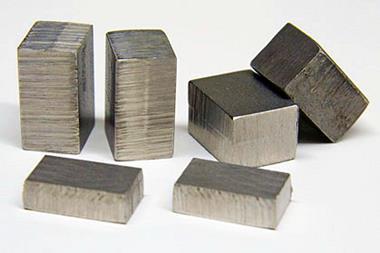

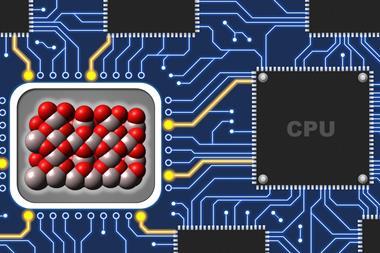


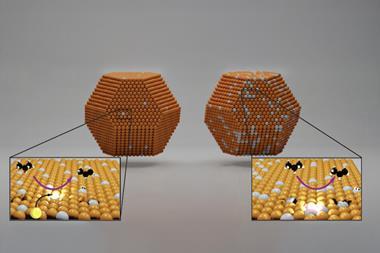



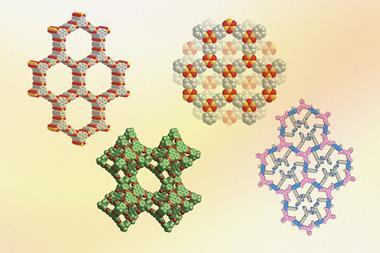
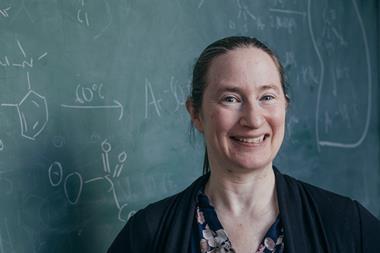

No comments yet